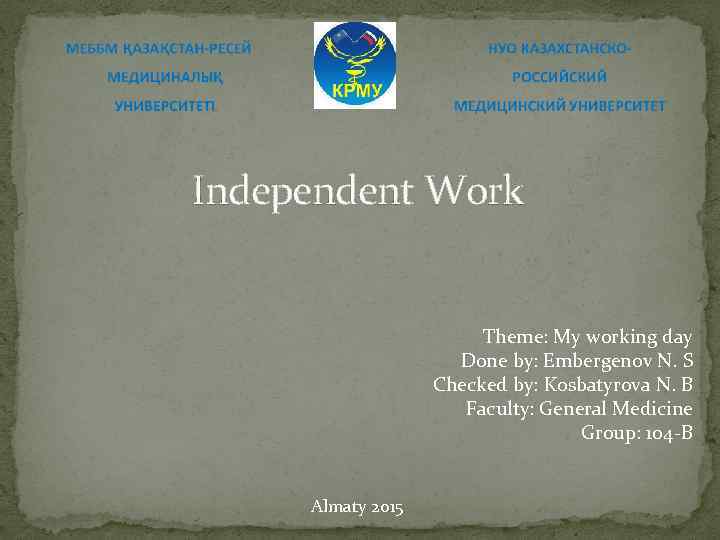
Independent Work Theme: My working day Done by: Embergenov N. S Checked by: Kosbatyrova N. B Faculty: General Medicine Group: 104 -B Almaty 2015
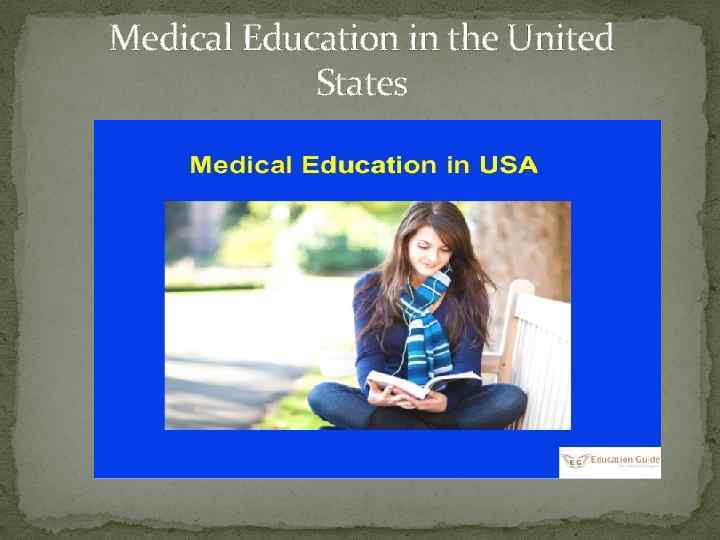
Medical Education in the United States
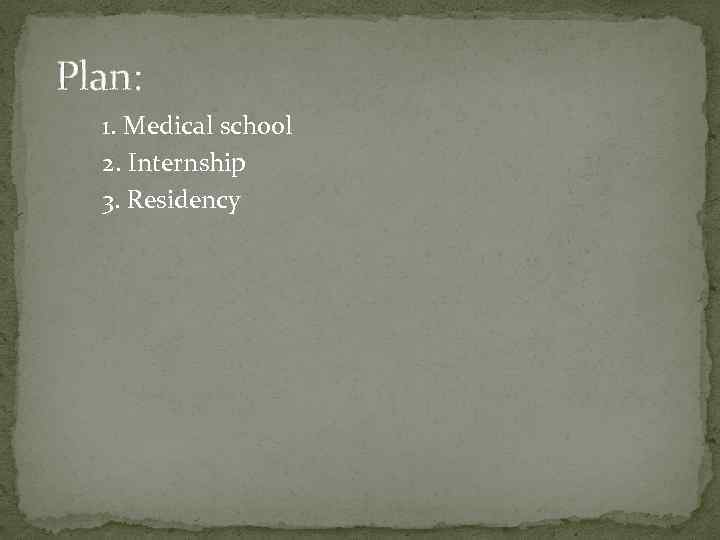
Plan: 1. Medical school 2. Internship 3. Residency
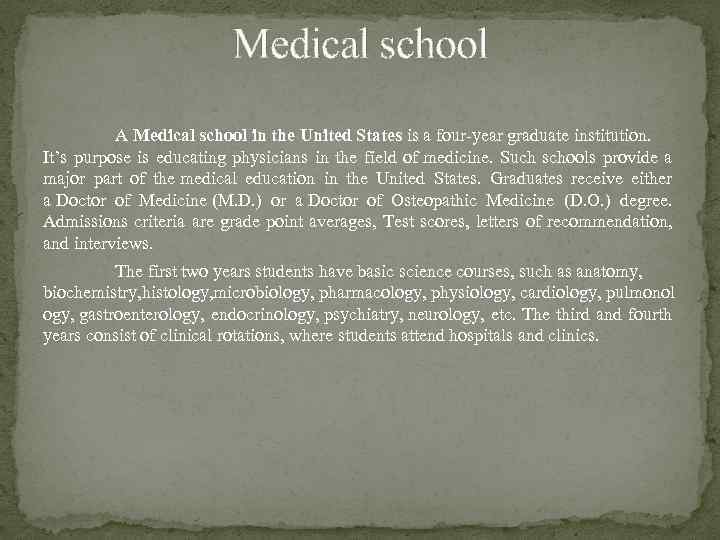
Medical school A Medical school in the United States is a four-year graduate institution. It’s purpose is educating physicians in the field of medicine. Such schools provide a major part of the medical education in the United States. Graduates receive either a Doctor of Medicine (M. D. ) or a Doctor of Osteopathic Medicine (D. O. ) degree. Admissions criteria are grade point averages, Test scores, letters of recommendation, and interviews. The first two years students have basic science courses, such as anatomy, biochemistry, histology, microbiology, pharmacology, physiology, cardiology, pulmonol ogy, gastroenterology, endocrinology, psychiatry, neurology, etc. The third and fourth years consist of clinical rotations, where students attend hospitals and clinics.
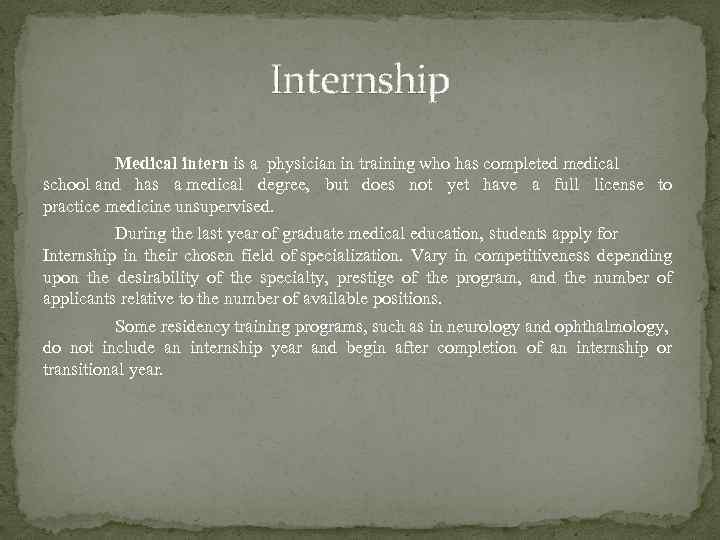
Internship Medical intern is a physician in training who has completed medical school and has a medical degree, but does not yet have a full license to practice medicine unsupervised. During the last year of graduate medical education, students apply for Internship in their chosen field of specialization. Vary in competitiveness depending upon the desirability of the specialty, prestige of the program, and the number of applicants relative to the number of available positions. Some residency training programs, such as in neurology and ophthalmology, do not include an internship year and begin after completion of an internship or transitional year.
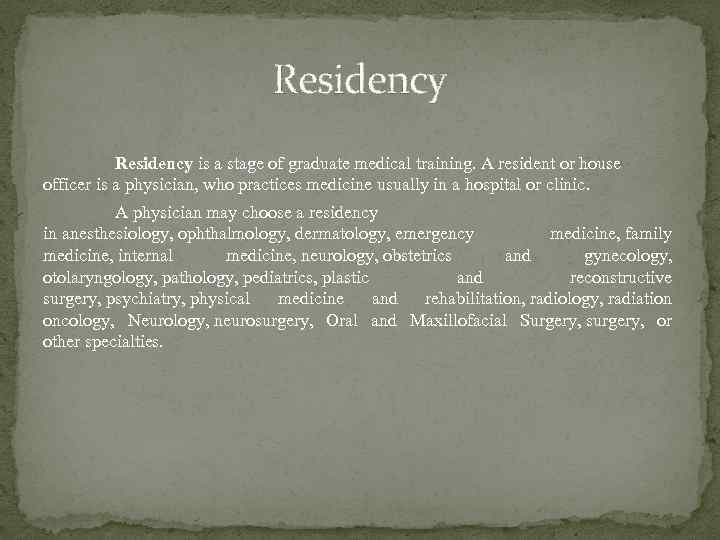
Residency is a stage of graduate medical training. A resident or house officer is a physician, who practices medicine usually in a hospital or clinic. A physician may choose a residency in anesthesiology, ophthalmology, dermatology, emergency medicine, family medicine, internal medicine, neurology, obstetrics and gynecology, otolaryngology, pathology, pediatrics, plastic and reconstructive surgery, psychiatry, physical medicine and rehabilitation, radiology, radiation oncology, Neurology, neurosurgery, Oral and Maxillofacial Surgery, surgery, or other specialties.
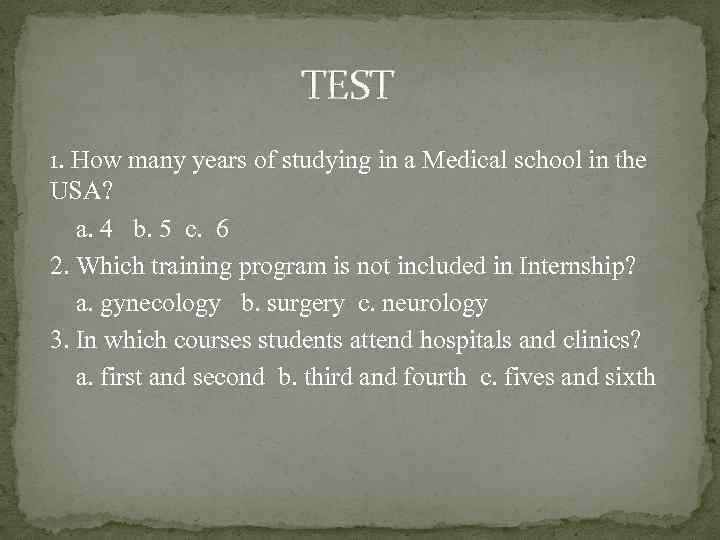
TEST 1. How many years of studying in a Medical school in the USA? a. 4 b. 5 c. 6 2. Which training program is not included in Internship? a. gynecology b. surgery c. neurology 3. In which courses students attend hospitals and clinics? a. first and second b. third and fourth c. fives and sixth

THANK YOU FOR YOUR ATTENTION!!!